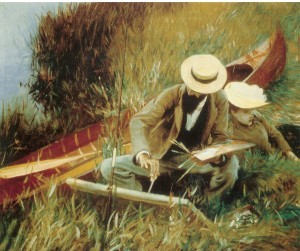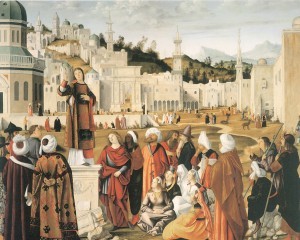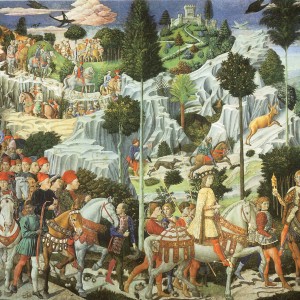The idea of Beauty is a complex one. Socrates put it simply and…well, beautifully. “Beautiful things are difficult,” he said. Indeed they are. However, we must not avoid them because they are difficult. The Bible urges us to pursue an understanding of Beauty – the beauty of nature, beauty in the arts and architecture, beauty of people and nations, and, of course, the definition of Beauty itself, the Shekinah glory of God. Great Ideas: Level 4 (Beauty & Ethics) seeks to open the eyes and sharpen the senses, and to continue to engage the intellect.
A right understanding of Beauty must necessarily go hand in hand with a right understanding of Truth and Goodness. You cannot have one without the others, or, at least, you cannot possess it wholly. These three (Truth, Goodness, Beauty) have been described as both the fundamental and transcendent values of culture, values by which all other values are judged. We see this idea clarified quite wonderfully in Tolkien’s tale, The Lord of the Rings. For those of you who have read this work you will recall the state of the Shire prior to Frodo’s quest to destroy the ring. The Hobbits existed in a sort of idealized agrarian paradise. For the most part integrity, harmony, clarity reigned and it was beautiful. Now, recall the state of the Shire toward the end of the book when the four hobbits return. The evil wizard, Saruman, had taken up residence at Bag End where he and his group of ruffians had begun to transform the Shire into a wasteland. No integrity, no harmony, no clarity…no Truth, no Goodness, and certainly, no Beauty. It is not until Frodo and his friends rally the other hobbits to stand for what is True that their Goodness can be seen in action. And only when the Shire is scourged of all Lies and Evil does Sam have a chance to begin to return his land to its former state of Beauty. Oh! Read the Lord of the Rings with fresh eyes! Tolkien captures the relationship between Truth, Goodness, and Beauty as only he could.
Ultimately what you believe concerning Truth, Goodness, and Beauty will depend on how you answer this question: Is God or man the measure of all things? In the end this will determine how you will live in this present age. And that leads us to our final topic…Ethics. Simply stated ethics is the study of right and wrong. In any study of ethics the student will learn to make judgments concerning the way he chooses to live. More importantly he will grapple with what motivates him to live as he does. This of course is not “pure ethics” (judgment)…our study will take the student to the realm of “morality” (actions). After all what good is a judgment if one never gets around to actually doing something about it? It is here that the student will come face to face with the statement, “Ideas have consequences.”
This year students will be challenged to really own what their knowledge….that knowledge must lead to action. To not do this is to be rightly branded and egghead…and who wants that label?
This year’s study is the flower of our entire Great Ideas program. In the end the decisions that students make concerning their own personal ethic will be based in part on what they have learned in their study of the ideas of God, Man, Truth, Goodness and Beauty. Eric Gill once said, “Take care of the truth and goodness, and beauty will look after itself.” By extension it is safe to add, “…and with these a right relationship with both God and man becomes what our Creator has always intended it to be – a way of life.” Amen! May it be so!
Click here for a comparison of the self-paced and online versions of the course.
Click here for a sample of the self-paced edition of the Student Manual for Level 4.
Click here for a sample of the online edition of the Student Manual for Level 4.





Reviews
There are no reviews yet.